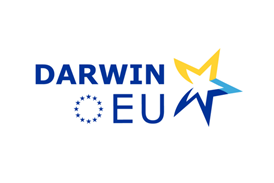All US FDA articles
-
 Industry news
Industry newsFDA approves world’s first RSV vaccine for use in over 60s
A first vaccine, developed by GSK, for respiratory syncytial virus has been approved by the FDA for use in adults aged 60 years and older.
-
 Journal
JournalFDA meetings: How to hold a successful meeting across the drug development lifecycle
This continuing professional development supplement discusses the available meeting options for products regulated by CDER and CBER, which should help the reader select the appropriate avenue to receive the Agency’s advice and develop a viable regulatory interactions strategy.
-
 CPD Supplement
CPD SupplementThe Olaratumab experience
As highlighted within this CPD article, a conditional marketing authorisation (CMA) can be revoked in Europe. However only one occurrence has occurred since 2006 (in April 2019). Lartruvo (olaratumab), a humanised antibody, was granted a CMA via accelerated assessment on 9 November 2016 for adult patients with a locally advanced, ...
-
 Journal
JournalWhat can past decision-making data tell us about how the FDA will make future combination product categorisation decisions?
In the US, combination products are categorised into drug/biologic or device regulatory schemes based on the primary mode of action (PMOA). The PMOA can be straightforward for certain combination products. It could be either a device action or a drug/biologic action. However, the determination of the PMOA for complex multimodal and novel combinations are more complex. This article will review a case of a borderline drug/device combination, with a disputed PMOA, and apply a simple regulatory framework to determine the appropriate PMOA. The article details how the FDA determines the PMOA for combination products and the importance of early determination.
-
 Journal
JournalA review of paediatric development challenges, FDA collaboration and future trends
Susan McCune M.D. Susan McCune M.D., is a paediatrician and neonatologist, with 18 years’ academic clinical and research experience. This was followed by 18 years at the US FDA where, from 2017 to 2021, she was the director of the Office of Pediatric Therapeutics in the Office ...
-
 Journal
JournalNavigating the regulatory landscape for regenerative medicines in Japan
This is the final article in a series of three that critically analyse the differences and similarities between the regulation of advanced therapy medicinal products (ATMPs), also known as regenerative medicines…[1],[2]
-
 Journal
JournalNonclinical immunogenicity evaluation in toxicology studies of biopharmaceuticals
One of the critical features that determines the clinical efficacy and safety of biotherapeutics, especially therapeutic proteins, is their ability to induce formation of antibodies against themselves. However, the clinical outcome cannot be predicted using the immunogenicity data from nonclinical studies…
-
 Meeting Report
Meeting ReportHM8: Enhancing dialogue to foster innovation
Susan Bhatti welcomed the speakers and highlighted the importance of having an iterative, responsive and holistic regulatory dialogue with a flexible scientific advice process and an alignment across the stakeholders. The recent example of the pandemic has emphasised the importance of having proactive measures and time-efficient interactions with health authorities.
-
 Meeting Report
Meeting ReportHM7: Regulatory progress in delivering on the promise of ATMPs
Tomáš Borán introduced the presenters, co-chair and panellists for this session, discussing the regulatory progress in delivering on the promise of advanced therapy medicinal products (ATMPS)
-
 Meeting Report
Meeting ReportHM4: Real world evidence in regulatory decision-making
During the first part of the session, Fred Senatore discussed applications and the challenges of real word data (RWD) and real-world evidence (RWE). He opened his talk with a definition of the two, with RWD being defined as the data collected from a variety of sources, and RWE as the analysis of the source.
-
 Meeting Report
Meeting ReportHM10: Scenarios to Consider Risk
This interactive session focused on how to develop and successfully implement a regulatory strategy. Participants were given the opportunity to analyse different scenarios and compare answers with the panellists who provided practical advice on ways to avoid potential pitfalls and disastrous mistakes.
-
 CPD Supplement
CPD SupplementDigital health technologies – an overview of EU and US frameworks
Digital health technologies have revolutionised the global healthcare system. This continuing professional development supplement provides an overview of the qualification frameworks for digital health technologies, which are used as drug development tools in the EU and the US.
-
 CPD Supplement
CPD SupplementUnderstanding the basics of ATMP regulation
Advanced therapy medicinal products (ATMPs) are biological products which comprise a diverse group of medicinal products that are often complex and diverse in nature. As these products are regularly developed for diseases of high unmet need, the requirements for evidence generation to support marketing authorisation often require innovative development plans. Within this continuing professional development supplement we investigate the regulation of ATMPs in the EU and US [see also Regulatory Rapporteur October 2020 and February 2020 for articles by Harriet Edwards on ATMPs].
-
 Journal
JournalGene therapy: regional assessment comparison
Axicabtagene ciloleucel (tradename YESCARTA) is an autologous chimeric antigen receptor T-cell (CAR-T) therapy that targets CD19 and is approved for the treatment of aggressive, relapsed or refractory forms of B-cell non-Hodgkins lymphoma (NHL). The active substance is composed of a patient’s cells that have undergone ex vivo modification, which causes ...
-
 Journal
JournalGlobal regulatory frameworks for the development of gene therapy products
Gene therapies have the potential to revolutionise the global healthcare system. Some of these products may offer curative benefits to patients with devastating conditions. This continuing professional development (CPD) supplement provides an overview of the regulatory framework for the development of gene therapy products in key markets.
-
 CPD Supplement
CPD SupplementExpedited drug development regulatory pathways in the EU and the US
This continuing professional development (CPD) supplement focuses on the regulatory framework available to drug developers for expediting their products’ development and review processes in the EU and US. These mechanisms are relevant for products which address an unmet medical need in the treatment of a serious and/or life-threatening condition.
-
 Journal
JournalEluvia: a drug-eluting stent
Peripheral arterial disease (PAD) affects around 8–12 million people in the US.[1] The strong association with ageing, tobacco smoking, and diabetes means that the prevalence of PAD will continue to increase in the coming years. Although 20–50% of patients with PAD are asymptomatic, they are still at significant risk of ...
-
 Journal
JournalFDA regulatory pathways for medical devices
The regulations, developed as a result of the 1976 Medical Device Amendments to the Food, Drug, and Cosmetic Act of 1938, share a common goal with the pharmaceutical regulations: they both strive to ensure that new medical treatments reach the public as quickly as possible while protecting patients and ensuring that the new treatments have a positive benefit–risk balance. However, they approach this goal in different ways. This continuing professional development supplement explains the fundamentals of the FDA regulatory pathways for medical device manufacturers that wish to bring their products to the US market.



















